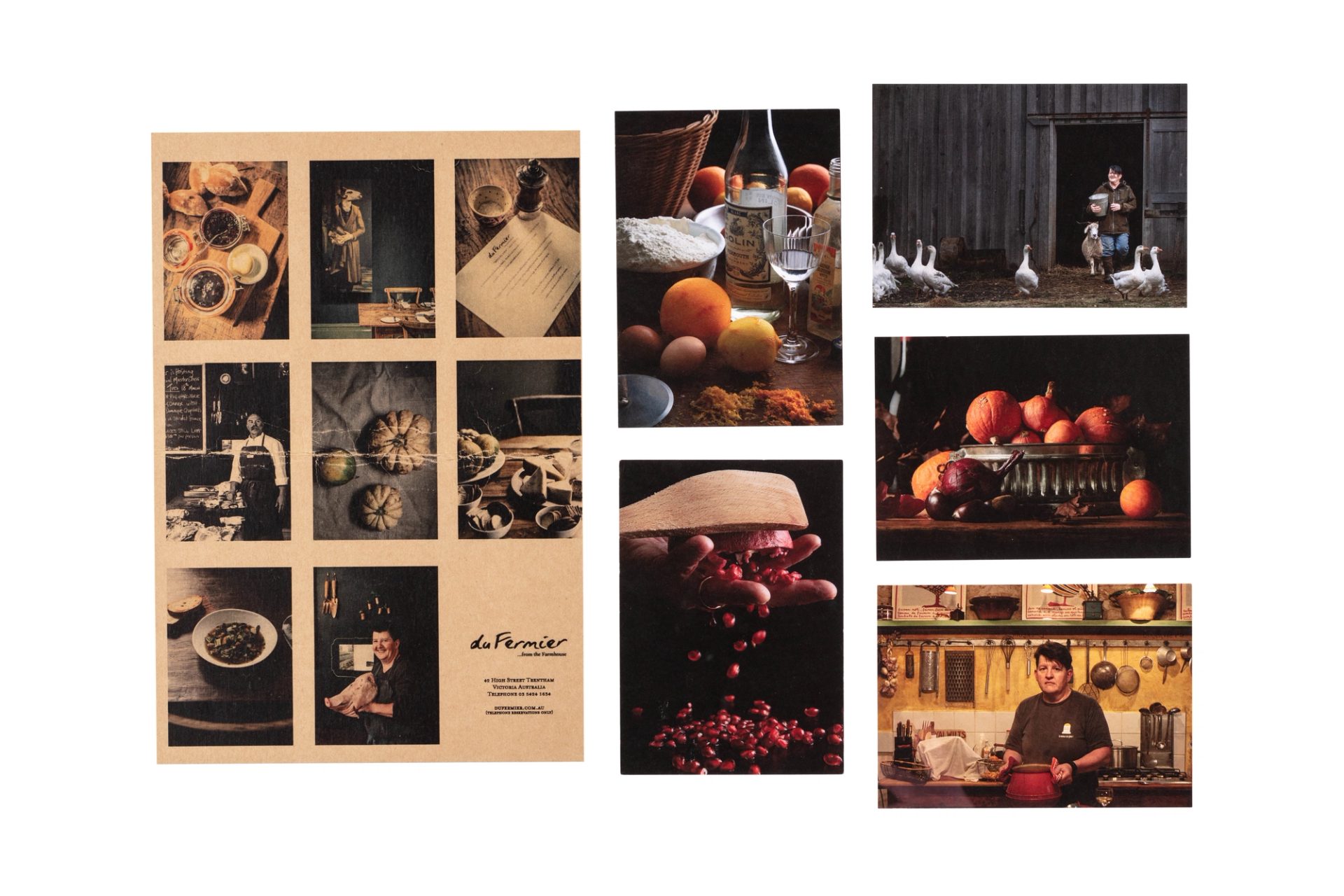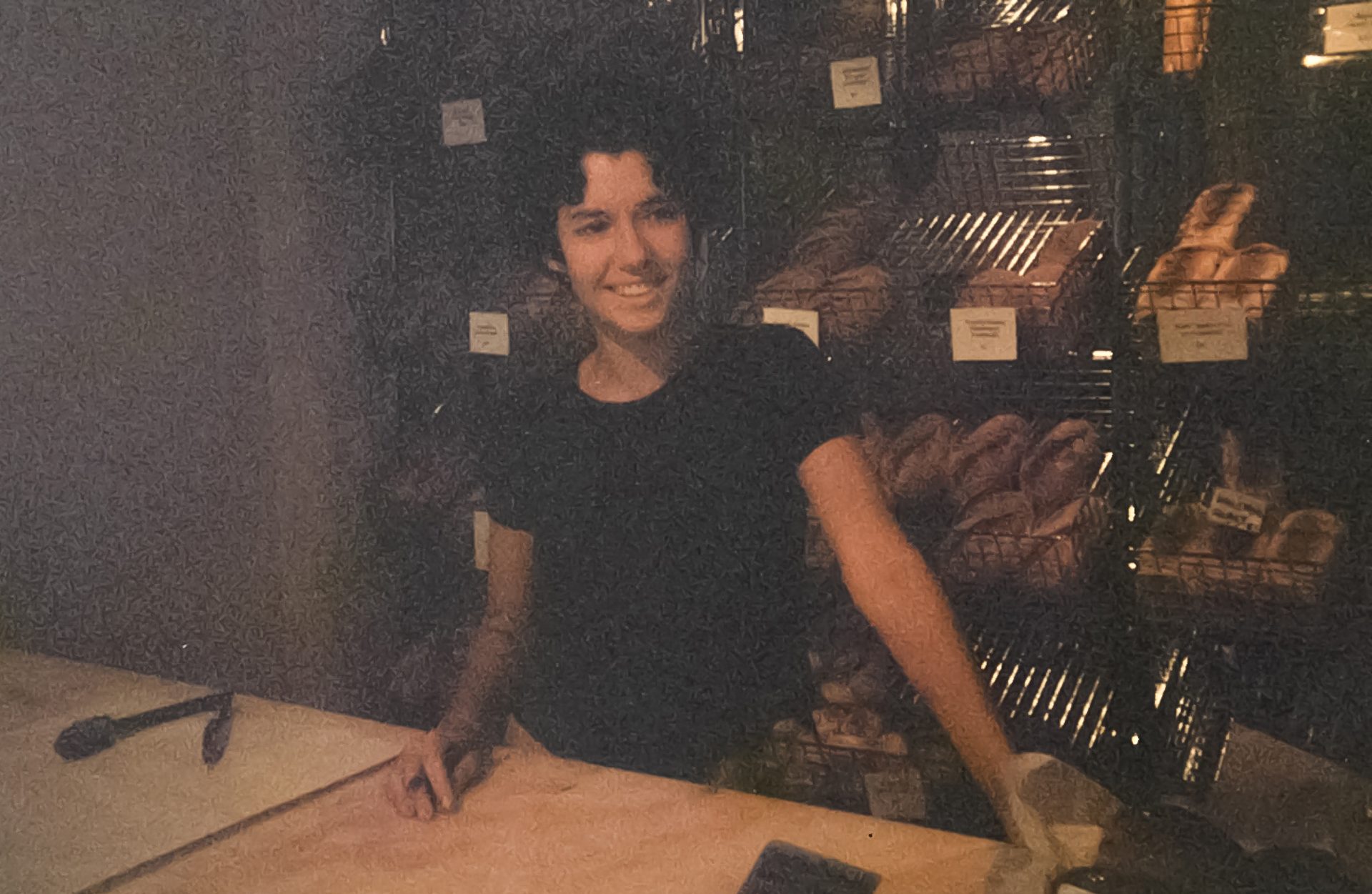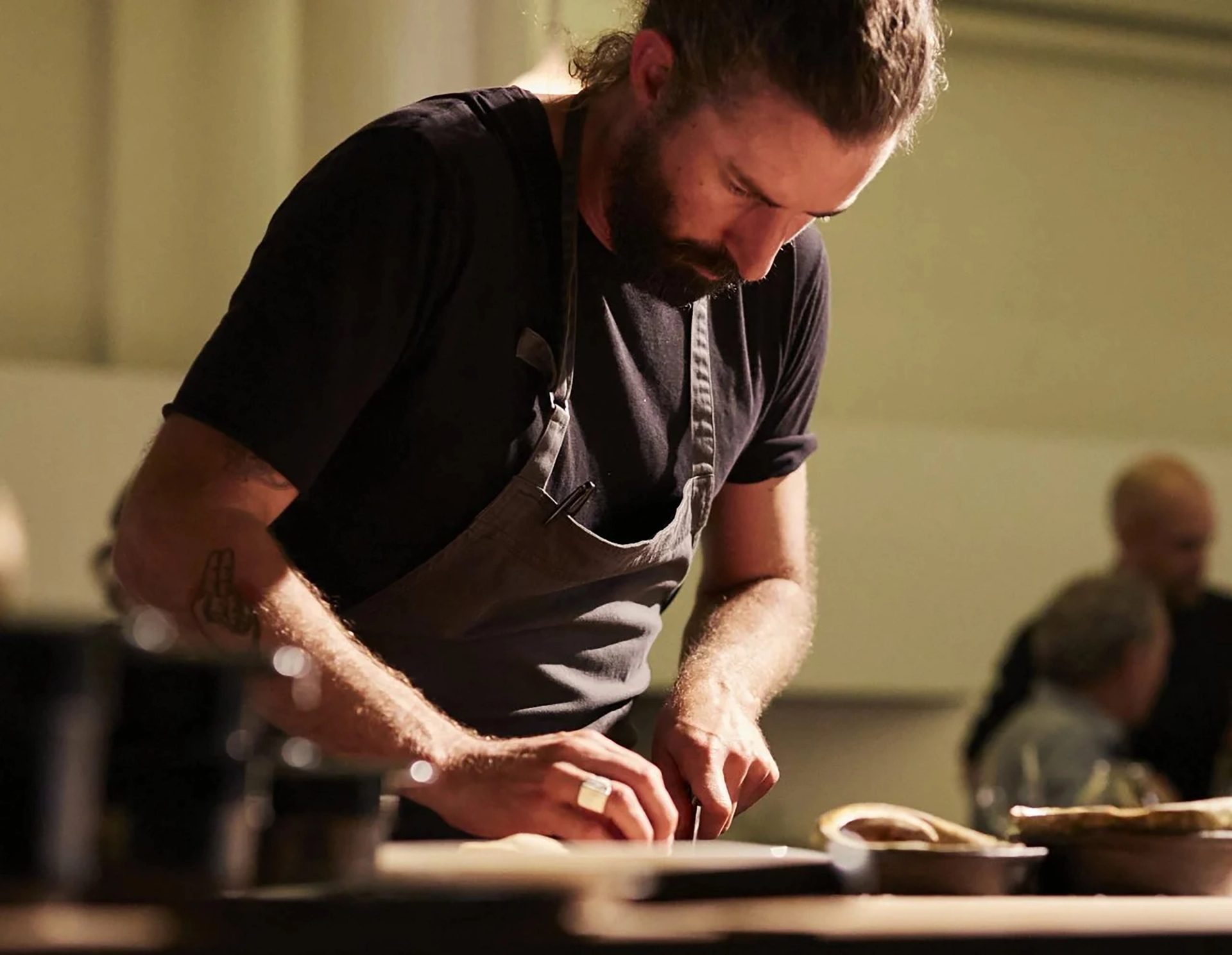Finding the Balance

Australian Culinary Archive
Established by Powerhouse in 2020, the Australian Culinary Archive is a living, evolving repository of our food industry: the chefs and cooks, food producers and vendors, writers and photographers, critics and diners whose hunger for innovation has coalesced over the decades into a vital sphere of cultural production. It is a storehouse for oral histories, written records, photographic documentation and unique artefacts that attest to the passion and distinction that typify this vast sector.
Led by Julie Gibbs, who has published a long list of Australian cookbooks in a 35-year career, the Australian Culinary Archive oral history archive brings together voices from across the food industry — from renowned professional chefs to community and household cooks as well as those that support and celebrate them.
About
Annie Smithers grew up in outer Melbourne in a semi-rural setting. Her formative time in a restaurant kitchen with Stephanie Alexander at the renowned Stephanie's in Hawthorn, Melbourne has informed her style of classic French country cooking. After ten years, Annie's restaurant Du Fermier in the Victorian country town of Trentham is still booked out weeks in advance. Annie and her wife Susan grow much of the restaurant's produce on their farm, Babbington Park, at Lyonville. She is the author of three books, the latest being Recipe for a Kinder Life, and is a food editor for The Saturday Paper.
Julie Gibbs is the curatorial adviser to the Australian Culinary Archive, a major initiative of Powerhouse Museum, collecting and preserving the stories and archives of Australia's leading chefs and producers. In her extensive career in book publishing Julie has given voice to and published works by our chefs, cooks and food writers.
Finding The Balance
Annie Smithers is the owner-chef of the popular paddock-to-plate restaurant Du Fermier in Trentham, Victoria. In this interview from the Australian Culinary Archive she describes her journey from Stephanie Alexander's restaurant, Stephanie's, to her carefully constructed life as a hands-on chef, restaurateur and producer.
Julie Gibbs Where did you grow up?
Annie Smithers I grew up in Park Orchards in the outer suburbs of Melbourne, with very much a sense of a small community, and I think that has had a bearing on what’s transpired in the rest of my life. It was a bucolic childhood: ponies, guinea pigs, chooks, goats. All the things that you can have on five acres.
My mother was a very good cook, a devotee of Beverley Sutherland-Smith’s cooking classes. The sense of food as a celebration is very important in our family. Mum would bone quails for Christmas dinner. [My parents] were entertainers and would have lavish dinner parties.
Mum encouraged us to cook, as long as we did the dishes. One of those fond memories is standing and waiting for the crepe with my wedge of lemon and sprinkle of sugar.
JG You are the first person I’ve interviewed for this project who went to restaurants as a young person.
AS My parents were inveterate restaurant goers and they took us to Stephanie’s, Two Faces, Maria and Walter’s, Fanny’s and Glo Glo’s, where I recall I had a steak tartare with a quail egg on it. They just became little memory vaults in my head. I think it was that theatre. At Stephanie’s I remember sitting in the tapestry room with the ox blood paintwork and I genuinely believed that there was just one person out there called Stephanie cooking dinner for me.
I got an apprenticeship in a little seafood restaurant called Reef Anchor in Malvern Road, run by Austrians. I was expected to mow the nature strip, vacuum the restaurant, clean out the grease trap. Very little cooking.
Then my father saw an ad in Epicure saying Stephanie’s had reopened after their annual holiday. He said, “Ring up and ask for a job.” So I did. Stephanie interviewed me. I had a trial in the kitchen and I was offered a job.
JG Can you remember that interview?
AS I remember her being intensely scary. I had to fillet smoked sprats, and I think I cleaned radishes.
JG Was Stephanie very present in the kitchen?
AS The thing about it was the training. Stephanie was very present, structuring a list and explaining, “This will test you but I believe it’s within your capabilities.” I learnt how to make bread, pastry – short, puff, choux – brioche, ice-cream, all the basic French dessert and pastry work. I still make them all the time. It was the breadth of skills that made it so special and formed the cook that I am today. I’m passionate about old-fashioned technique. It’s not the same as a lot of the modern food and I’m completely at peace with it because there always is a place for classic French provincial cooking. Stephanie has been such an extraordinary mentor in my cooking life.
JG Let’s move forward to 2005 when you opened Annie Smithers’ Bistrot in Kyneton and you made paddock-to-plate your guiding philosophy.
AS I wasn’t sure what the locals would want and I just started this little restaurant. In those early days I was making decent money a year in jam – that sustained the restaurant. I didn’t have a lot of business experience. People say, “Oh, you’re at the point where you should work on the business, not in the business.” But my passion is to cook. I want to cook until my hands fall off. So telling me to get out of the kitchen and be a management person is like cutting my soul out. I can’t do that. By 2008 we were becoming incredibly sensitive about food miles, the provenance of food. I decided to turn my backyard into a productive garden, which became absolutely pivotal to the restaurant.
JG Could you describe the milieu in which you made du Fermier?
AS After selling Bistrot I opened du Fermier in Trentham, a tiny weatherboard country town with only one proper brick building. The garden became so centric in my cooking that I don’t think I could construct a three-course menu out of the ether anymore. I would go out, see what was ready, and shuffle the protein of the main course and then work either side. I fell in love with Susan, my now wife, and we bought Babbington Park, a 23-acre (9.3-hectare) property of incredible beauty in Lyonville, 10 minutes out of Trentham on the way to Daylesford. With rich, volcanic soils, it had been an organic farm, so it doesn’t have any of the nasty poisons. We moved here in 2017, which meant that I had to start the garden all over again.
JG Can you describe the current menagerie?
AS There’s a Westie and a cairn. There’s the four cats. There’s the nine cashmere goats, for me to shear. There are eight miniature Cheviot sheep, too many cows. Susan’s read the riot act and some of them are going, but at the moment there are six miniature Galloways. There’s a lot of Sebastopol geese and two Toulouse geese. There’s five black call ducks. There’s Mr Ping and Martha and the Love Child, but they’re mixed breed. And then there’s the French Marans known as the hungry girls. There’s the blue Orpingtons known as the fluffy bums. There’s the speckled Belgian, Bearded Belgian d’Uccles known as the cosmonauts because they look like the cosmos on their feathers. And there’s the Chala Cartel, which is the Colombian one. There’s the cream legbars and there’s some old Araucanas. There’s all the rogues who are CSIRO white leghorn bantams. And then there’s the Crèvecoeurs, the endangered chicken from Normandy.
JG A lot of those are pets, aren’t they?
AS They’re all pets, but they have a purpose. The three ruminants keep the grass down. They are breeds that need a little care in the world to keep their gene pools alive. The goats and the sheep are stabled at night. All of that is part of our circular life where all of that bedding creates the compost that creates the vegetables. The Americans would call it farmsteading. I suppose the Scots would call it crofting. It’s very much that small-scale farming where everything leads into each other, and that’s how we grow the food.
JG Annie, you’ve been very vocal about mental health.
AS I’ve struggled with mental health all my life. A commercial kitchen was a place where the door was closed and people behaved in a way that is now no longer acceptable. It was a very adrenaline-fuelled, performance based, high-octane environment of pressure, and gas and knives and heat, and fury and joy and creativity. You worked incredibly long hours. And you spiralled. There were cultures of alcohol, of drugs. The model was that you worked as hard as you possibly could and you would get somewhere. The very first time I’d seen a psychiatrist, she said to me, “This is not a healthy work balance.” I said, “But that’s what we do.” And she said, “Well, you need to understand that your work is not everything.”
I went through a phase living this bucolic life of having a successful restaurant, a kitchen garden. I was about to become a cookbook author. I was my own little legend in my own little lunch box. It was so hard keeping up appearances and I just didn’t want to wake up anymore. I felt great joy in what I did but that space between being Annie Smithers and just being Annie was a very dark and sad little place.
You either make a decision of doing something to change it, or there is the other option, and we know that is a terrible curse in our industry. So I did seek help. And the tools, the reality of having that level of professional care, is one of the reasons that I will happily talk about it to anybody, because it helps to normalise it. It taught me there are three contributors to my sense of depression and anxiety. In those early years I was definitely agoraphobic. The only way that I could get out the door was to put on the Annie Smithers persona. Thankfully I’m well over that now and I’ll trot out anywhere. Lack of sleep is the foremost trigger for me. Financial stress is another, and overwork.
In this microcosm of Annie’s restaurant world I’m never going to be overly rich, but I live a nicely constructed life. That has come to pass by placing limits on what I can do, what I expect others to do, coupled with restricting supply. When I stopped chasing the dollar and expecting to earn more and more money, life became a great deal easier and more financially viable.
I get in there, I put on the bread, and that Zen moment arrives of the hands know what to do, the head knows what to do, and I follow my heart and just cook.
This interview was first published by The Saturday Paper.
More
Powerhouse Food
Powerhouse Food examines food within the context of history and how its connectedness draws together land, creatures, people, roads, factories, markets and waterways, sustaining us and holding our futures.























